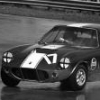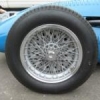Having seen the never ending b/s about Pinto engines that were never a US engine how on earth are they known as such. Yes they were an International Ford engine from Germany and were used in Pintos as well. BUT for me in Oz they were the 2 litre Cortina engine that at times found its way into Escorts and in England it seems Capris as well.
I have owned quite a few as cheaper used cars. They go ok though have an appetite for cams. An cam belts. And too often leak oil. And being all iron are heavy.
I know that in a Escort you can feel that weight compared with a pushrod engine but the extra grunt makes up for less balance.
They were moderatly succesfull in 2 litre Touring cars, better than the 1.6 twin sump. And Bob Holden owns a fleet of them that he rents out for people racing GpC Tourers. So still a few on the tracks even now.
BUT how on earth do the Europeans call them Pintos as they are a Euro engine.

























